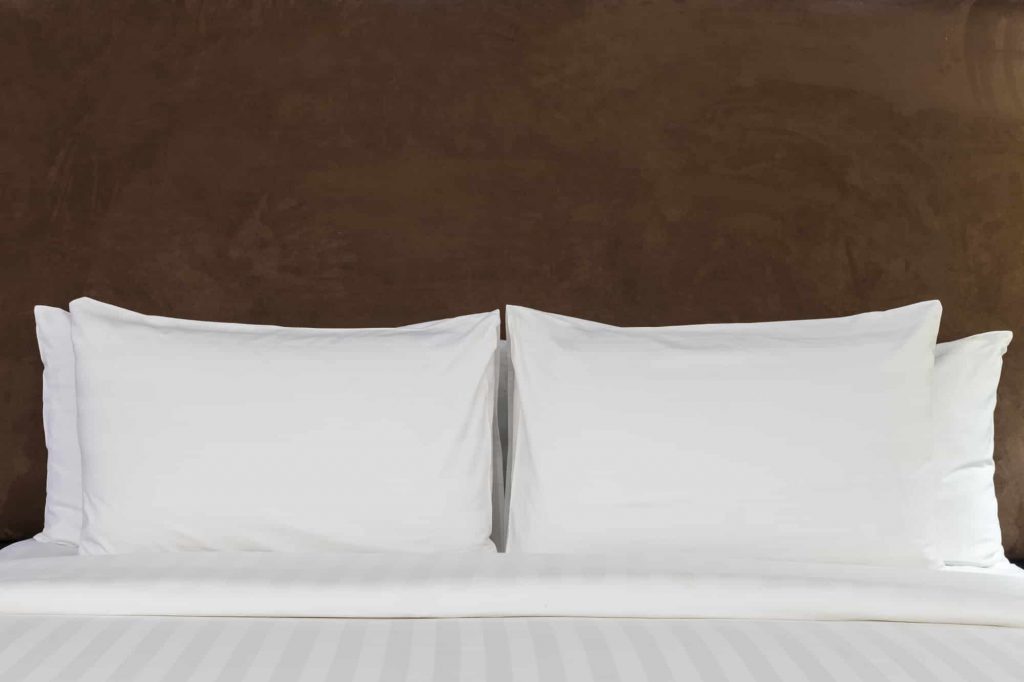
Without a doubt, bed bugs are some of the frequent pests in every home. In Singapore, they are among the frequent “guests” in HDB flats to condominiums and even landed properties. While they rarely cause any direct harm to humans, they sometimes carry dangerous diseases.
In this regard, taking the proper steps is essential to preserving your peace of mind. Often, bed bugs are sneaky and very hard to find. Luckily, taking the required steps will rid your home of pests.
Besides, you can always rely on professional bed bug control services. They will not only help you exterminate the little mongrels, but also provide maximum protection against future infestations.
Homees provides a directory of bed bug control companies in Singapore. You can compare and view a list of bed bug control companies that can suit your home needs.
11 Best Bed Bug Control Companies In Singapore (Our Top Picks)
Companies | Services | Where to find | Ratings |
Homees Concierge Service | Homees Concierge Service Team - tell us what you need and we'll help get it solved. Talk to us today by giving us a call or Whatsapp us now. | 994 Bendemeer 03-04 Singapore 339943 | Average Rating: 5/5 |
Pest Off | - Termites | 25 Kaki Bukit Pl, Singapore 416203 | Average Rating: 5/5 |
WTG Pest Control | - Pest Control | 1 Scotts Road #24-10 Singapore 228208 | Average Rating: 5/5 |
Absolute Pestcare Pte Ltd Visit | - Aedes | 192 Waterloo Street #07-07 Sky Line Building Singapore 187966 | Average Rating: 5/5 |
Maximum Pest | - Ants Control | 54, Maude Road Townshend Building #02-06 Singapore 208346 | Average Rating: 5/5 |
Top Pest Control Pte Ltd | - Termite Control | 3791 Jalan Bukit Merah #08-12 E-Centre@Redhill Singapore 159471 | Average Rating: 5/5 |
Aegis Pest Services | - Ants | 75A Killiney Road, #02-05 Singapore 239529 | |
Ridpest | - Residential - Construction sites | 1 Bukit Batok Crescent #08-41 WCEGA Plaza Singapore 658064 | Average Rating: 5/5 |
Pentapest Pte Ltd | - Residential Pest Control - Industrial Pest Control | 31 Woodlands Close #04-02 Woodlands Horizon Singapore 737855 | Average Rating: 5/5 |
1 For All Pte Ltd | - Termite Control. | 8 Burn Road #15-13, Trivex Building Singapore 369977 | |
Vector Pest Management | - Residential Pest Control - Industrial Pest Control | 10 Anson Road #27-18 Singapore 079903 | |
Aerohub Pest Control | - Pest Management Program | #03-25 Gambas Cres, No.7 ARK@Gambas Singapore 757087 |
Hire Bed Bug Control Services In Singapore
View All Bed Bug Control Companies
The Cost Of Pest Control In Singapore
Types of Pest | Estimated Price For Treatment |
Ants | $100 - $210 |
Termites | $120 - $260 |
Mosquitoes | $70 - $150 |
Bed bugs | $400 - $1,500 |
Cockroaches | $80 - $160 |
Rodents | $250 – $400 |
What is a bed bug?
Generally, bed bugs are small, oval insects that are brownish in colour. Their typical food source is blood. Typically, their bodies swell and become reddish after feeding. Still, adult bed bugs have flat bodies the size of a mere apple seed.
Another distinctive feature of bed bugs is that they don’t fly. However, that doesn’t mean they can’t move around quickly over floors, walls, and other surfaces. Over their lifetime, female bed bugs may lay hundreds of eggs, each the size of a speck of dust. Immature nymphs shed their skins five times before they reach maturity.
Of course, they need to feed on blood before each shedding. Consequently, bed bugs may develop into adult bed bugs in as little as one month.
1. Bites that cause itchiness and irritation
While bed bugs are often hard to detect due to their small sizes and discrete behaviour, if you notice bites on your body that cause some itchiness and irritation, it may be because of a bed bug.
Some common symptoms include feelings of soreness, welts, reddish bumps and inflamed patches on your skin. People who are more sensitive to such bug bites may develop more serious symptoms such as fever, nausea, skin infection or even difficulty in breathing.
2. Discolouration on your bed sheets
When you are changing your bedding and notice rusty and reddish bed sheets and mattress stains, this may be a tell-tale sign of bed bugs. The discolouration or stain can be caused by bed bugs being crushed.
Alternatively, dark spots on your sheets around the size of a small dot may be caused by bed bug excrement and can be yet another sign of a bed bug infestation.
The causes of bed bugs
If you too believe that filth is the reason behind infestation, you are mistaken. These bugs can survive in any environment as long as they are able to access their food. Here are some places they can come from.
- Office buildings
- Workplace
- Scholl, colleges, and universities
- Public transportation
- Nursing homes and daycares
- Libraries and theatres
- A friend’s house
- Hotel, motel, or resort
What are the common types of bed bugs in Singapore?
In Singapore, bed bugs are a severe problem due to the overpopulated area. Since they feed mostly on human blood, they use beds as their breeding ground. Sometimes, they may also reside in couches, cracks, hotels, aeroplanes, or crevices.
While their bites may cause inflammation and itchiness, they may also carry diseases. In some cases, certain species may also feed on rodents, bats and birds. That’s why it’s crucial to identify the type of bed bugs before applying a proper treatment. Here are some of the most typical bed bug types in Singapore:
Cimex Lectularius
Arguably, this type of household bed bug is the most common throughout the world. These tiny bugs flourish in temperate climates and feed on human blood. They are smaller than a pencil rubber and are brown in colour. However, they quickly turn red and swell after feeding.
Cimex Adjunctus
Typically, this type of bed bug feeds on bats’ blood. Its usual habitat is in the tropical climate. Sometimes, they will pick human hosts, especially in homes where there’s bat infestation.
Cimex Hemipterus
Perhaps, this bed bug species also prefers tropical regions. While their primary hosts are poultry, they may again attack humans. People in rural areas who spend most of their time around poultry are most prone to such bites.
Oeciacus
Surprisingly, this type of bed bug lives generally in bird nests, especially in the nests of swallows. As you can imagine, they feed on birds’ blood. However, bird migration causes them to look for human hosts. In turn, they may invade bedrooms, couches, and other areas where human beings may spend time resting.
Fabricus
Another type of bed bug that prefers warm and humid climates is the Fabricus species. Perhaps, this bug loves infesting residential places like hotels and lodgings. Usually, people who reside in such areas are the primary carriers of this pesky critter. A common means of carrying this bed bug from one place to another is clothing or luggage.
What are the signs of bed bugs in your home?
While they don’t usually carry diseases and aren’t dangerous, bed bugs can cause you a lot of stress. Indeed, these pesky bugs can disturb your everyday life to a point where you can’t take proper rest. Needless to say, the earlier you identify a bed bug infestation, the fewer headaches you will have. Here are some of the signs not to ignore.
Itchy red spots on your skin
Usually, waking up with itchy red spots on your skin is the most noticeable sign of a bed bug infestation. Typically, bed bug bites are small, red, and itchy. They may appear in lines or in clusters. However, not all people react to these bites, which may make identifying an infestation more difficult.
Unexplained musty odour
Do you feel some unfamiliar and musty odour in your home? In such cases, you might have a bed bug problem. These bugs release pheromones that can cause an unpleasant smell when there’s a large number of insects present.
Bloodstains on your bed sheets
Another cringe-worthy sign of a bed bug infestation is waking up with your sheets peppered with blood. Sometimes, people may unconsciously squash a bug during the night. If you find polka dots on your bed sheets or mattress, you should call for professional pest control.
Dark, rusty-coloured spots on your mattress and walls
Perhaps, the same goes for the dark, rust-coloured spots on your mattress and walls. Just like any other living creature, bed bugs leave faecal stains after they feed. Since they live in beds, you’ll likely find such droppings on your bedding. Besides, you can find such colours on your walls.
Bed bug shells
Similar to cockroaches, bed bugs may leave their eggshells in the out. As soon as they infest a home, bed bugs may start multiplying. In turn, you may begin noticing white, husk-like specks in your mattress or along your headboard.
Speaking of tiny white spots, you can discover these signs in the joints of your furniture, too. Therefore, you should inspect the rest of your home for signs of bed bug infestation. Simply, grab a flashlight and peer between cushions or behind headboards. Also, you can peel back the fabric stapled to the bottom of your chairs.
Your guests or neighbours have had bed bugs.
As unbelievable it may sound, bed bugs can spread from person to person. What’s more, a common way of bringing bed bugs at home is through hotel rooms or neighbours. On the other hand, a guest may unexpectedly bring bed bugs into your home with their clothes and luggage.
You recently bought second-hand furniture
Sometimes, the second-hand antique furniture you’ve just bought may carry unpleasant surprises. Whenever you bring used furniture into your home, you risk infesting your home with bed bugs. Therefore, you may think twice before buying that old couch.
Why do you need to get rid of bed bugs quick?
Do you know that one blood-fed female can produce 2-5 eggs each day and 200 to 500 eggs during her lifetime? The hatchlings are tiny to get noticed, and you know what a baby needs only a single blood feast to move into the next stage of development. Now you can do a little math to estimate the number of bugs that can be generated from each egg.
Also, research by the College of Agriculture at the University of Kentucky revealed that bedbugs like the taste of human blood more than any other warm-blooded animal.
This is why we suggest removing these bugs before it starts producing their generation among you. How? Here are some effective methods for controlling infestation.
9 Ways to get rid of bed bugs fast
1. Identify the activity of bed bugs
You need to be constantly vigilant to stop these creatures from spreading out in your home. Make sure you have an idea of what it looks like. These are tiny brown insects that are hard to see.
You can look for specific signs of the activity of bedbugs like brownish-red or rust-coloured stains or a sickly sweet odour comparable to almonds near your sleeping area. There can also be some discarded shells near the edge of the mattress.
2. Vacuum the home completely
Vacuuming the house is a good option to get rid of them. Vacuum the entire house instead of just the bedrooms. They can easily spread from room to room, and you can stop these bugs from spreading by hiring a professional cleaner.
Also, encase your mattress with special mattress encasements and seal your items such as books, clothes, and frames in special plastic bags.
3. Rinse the infested items in hot water
A simple way to get rid of their eggs and larvae is to ‘boil’ the infested items in hot water. Wash all the bedsheets, pillow covers, and clothes in hot water. It becomes difficult for the bugs to sustain at high temperatures. Rise the temperature to 120 F and rinse all the infested items.
4. Try out steam treatment
Using hot steam is a great way to destroy them and their eggs without damaging the environment. As steam can penetrate through the crack or mattress lining, it can effectively wipe out bug infestations even from the hard to reach areas.
5. Use diatomaceous earth powder
Diatomaceous Earth is a chemical-free powder created from the fossil remains of tiny aquatic organisms. With the ability to absorb the fat and oils from the insects, the powder effectively kills by dehydrating them. Just apply it to the infected area, in cracks and crevices, and you will be able to see dead bodies.
6. Contain the infestation
Once you track down the whereabouts of the bed bug infestation, it’s essential to keep them contained. That way, you’ll be able to get rid of them quickly and easily. Usually, you can do this using a vacuum. By running it over possible hiding places, you will trap the insects. Then, simply throw out the vacuum bag and clean your machine thoroughly.
As for the affected clothes, put them at the highest possible temperature in your washing machine. If you can’t wash an item, put it in a dryer for 30 minutes at the highest heat setting. Of course, you can’t put everything in the washing machine or dryer. In such cases, you should place it in a plastic bag for a few months to make sure all the bugs die.
7. Prepare for bed bug treatment
Before you start the treatment procedure, make sure you prepare your home. You will increase the odds of success by throwing and cleaning all linens, carpets, drapes, clothing and other hiding places. What’s more, you should declutter your space but moving items from an infested room to a clean one is a huge no-no. Also, don’t forget to seal up open cracks, crevices and glue down loose wallpaper.
8. Exterminate the bed bugs
Perhaps, there are a few ways to exterminate. Usually, the most natural way of doing it is to wash fabrics with high heat (46 degrees and more). On the opposite, you can try with a freezing temperature of fewer than 0 degrees Celsius.
As previously mentioned, you should either wash, throw out or contain such items. If you choose to manage them, make sure you’ve left them long enough, so all they are all dead. After you kill all of them, place bedbug-proof covers over your mattress to trap and kill them inside. Also, the new bugs won’t be able to get inside.
If you’re up for more drastic measures, you can use some insecticides specifically markeds. For example, you can buy pyrrole, pyrethrins, desiccants, foggers, or plant oil-based products. Either way, you’ll have to ensure you’ve taken proper safety measures as not to harm your family or pets.
9. Monitor the affected areas
Finally, achieving satisfying results often requires more than wiping them out. In other words, you may need to monitor the affected areas even after the treatment has worked. Sometimes, you may need to check for a full year to ensure there’s no activity.
Can I get rid of bed bugs without calling pest control?
Of course, the DIY approaches may not always work as expected. And when common means don’t work, it’s time to get a professional pest control company involved. Typically, a pest exterminator will have special equipment and chemicals that aren’t generally available to residents. In turn, they are capable of completely eradicating an infestation.
Furthermore, a pest control company may perform a whole-room heat treatment. The pest exterminator will bring in special equipment to heat up the room to a too high temperature. As a result, they will die without the use of chemicals. Of course, the specialists may have to make two or three visits for better results. You may need to stay out of the treated rooms for a few hours after each procedure.
Use DIY Bug Sprays
If you are wondering how to get rid of bed bugs and eggs in a natural way, create your own spray. Here are some effective DIY sprays to try out.
Oregano Bed Bug Fighting Spray
A mix of oregano essential oil with cayenne pepper, grated ginger, and a cup of water makes a great bug spray. Just boil the mixture and spray it in the bug-prone areas.
Lavender/Peppermint Oil Pesticide Spray
Add about 15 drops of peppermint oil and lavender essential oil to water in a spray bottle. Shake well and you will have an effective natural pesticide to stop these things from entering your house.
Vinegar Spray
Fill a bottle with white vinegar and water in a 1:1 ratio. Tighten the lid of the bottle and shake well and spray it around.
Pesticide sprays from stores
If you don’t have time to make your own pesticide, you can shop it from stores. A large number of pesticides are available in the market that is effective to get rid of these pests.
Do a bit of research for identifying bed bug sprays that are effective on bugs and safe for your health. You can look for some nontoxic options like Super Grade Bug Killer and Enta Bug Killer.
Stay away from hazardous pesticide
Applying pesticides, foggers, and bombs and wondering why you can’t get rid of these bugs? It is because bugs are resistant to these bug-killing substances. It may harm your kids and pets, so it is better to avoid the use of chemicals sprays and powders.
You should consult an exterminator before using it. DE powders are safe to use and a great option to kill them. Sprinkle it around the furniture legs, headboards and inside mattresses and box springs. The sharp crystalline molecule of the powder shreds the shells and kills them instantly.
Repeat the treatment every 2-3 weeks
No matter what method of removal you use, make sure you repeat it every 2-3 weeks. This will help you eliminate the larvae and eggs that could have been left in the initial round.
Treat the crevices and cracks as soon as possible
They hide in cracks and crevices of furniture, inside the mattresses and sofas, carpets, sockets and so on.
Inspect these bug-prone areas properly and seal all cracks with sealants or sprinkle dust diatomaceous earth powder around them. This can kill the hidden bug inside the hard to reach areas of your home.
The best way is to use these combinations.
Well, there is no one-size-fits-all solution to discard these bugs permanently. You must try out multiple approaches to resolve the problem. You can take the help of professional cleaners to your carpets and sofas with steam vacuum cleaners.
Moreover, sprinkle diatomaceous powder or borax all around the house. Another key step that you must not skip is washing the clothes in hot water to remove them effectively.
Although all the above methods are effective, the best way to completely get rid of bed bugs is to use all the above methods together.
Popular Facts and Myths about Bed Bugs
While they don’t have a genuine interest in hanging out on your body, it might bite you occasionally. Indeed, those pesky critters are making a comeback around the globe and are ready to drive you mad. Here are some exciting facts and myths you need to know when dealing with these pests.
In the past decade, the bed bug population has multiplied quickly. What’s more, this revival might be the worst yet. Arguably, urban areas, global travel, and the increasing pesticide resistance are the leading causes of an infestation.
Worst of all, They are indoor pests that don’t have high and low seasons. They spread rapidly throughout the years and benefit from the mass misinformation about their nature and behaviour. That’s why it’s a wise idea to have some basic knowledge about the small bloodsuckers.
If you are interested to find more about termites, you can have a look at our Termite Infestation article too.
But first, let’s take a look at some of the popular bed bug facts and myths:
Myth: They Can Fly
Generally, there’s that main misconception about them about their flying capabilities. Surprisingly, many people believe that these pests can actually fly.
Fact: They cannot fly
Simply put, they cannot fly because they don’t have wings. So, unless you put a blow dryer behind them, you won’t see them fly. Practically, a bed bug can crawl about a meter a minute.
Myth: They have high reproduction rates
Another misconception has to do with the bed bug reproduction rates. While most insects reproduce quickly, this is not the case with bed bugs.
Fact: They reproduce slowly
Compared with other insects, bed bug infestations may take longer to grow. Perhaps, these pesky critters are relatively slow in their reproduction. Typically, an adult female one can produce just about one egg per day. This egg may need ten more days to hatch. After the offspring hatches, it may require five to six weeks to develop into an adult.
Myth: living for long periods without food
Generally, there’s a massive debate on their survival skills. Usually, there are suggestions of all kinds. However, some scientists are bold enough to claim that they can live a whole year without food.
Fact: It can survive two to three months without a blood meal
As much as we want to believe the abovementioned theory, it can survive only two to three months without a blood meal. Indeed, there is some truth in the claim that it can live up to a year without feeding. Since they are cold-blooded, their metabolism slows down in colder climates. As a result, they live longer without food.
Myth: It will bite humans only at night
Typically, most homeowners tend to believe that it will bite them only at night. Indeed, those pesky critters are nocturnal insects. But they may be more similar to humans than you’ve thought. In such cases, keeping a light near you may not help keep the tiny vampires away.
Fact: It bites when they’re hungry
Arguably, there’s no strict mealtime for them. Perhaps, they’ll bite you when they’re hungry. Try going away, and you’ll see the result as soon as you sit down on your couch. The small bloodsuckers will quickly come looking for you.
Myth: It lives only in mattresses
Perhaps, many people think that they really live up to their name. However, the misnomer should have a much broader meaning.
Facts: “Bed bug” is a misnomer
Indeed, they have a much wider habitat. Moreover, they spread away from beds into any cosy and discreet places in the living area. Surprisingly, they can travel thousands of kilometres in your suitcase.
Myth: It prefers unsanitary conditions
If you think they prefer only homeless shelters and dirty places, you’re dead wrong.
Fact: They are terribly tolerant in terms of sanitary conditions
Perhaps, you can find them anywhere from high-end apartments to homeless shelters. The truth is that they don’t discriminate against living spaces. If you wonder why they’re prevalent in low-income housing, take a look at the population density.
Those little bloodsuckers love to live in densely populated areas. Moreover, low-income households lack the finances to pay for proper pest control.
Myth: They travel from body to body
Similar to some common parasites, It seems like insects that love hair or skin. Fortunately, they have little to do with body heat.
Fact: It prefers items removed from our bodies
Indeed, these pests don’t like heat at all. That’s why you can safely pull down your hair. Those little critters won’t even bother sticking to your clothes. However, they may find shelter in backpacks, luggage, shoes, and everything that’s far from their body.
Myth: They transmit various diseases
Arguably, one of the biggest fears of every homeowner is that a bed bug bite can transmit diseases. Of course, they are likely to drive you crazy and even induce sleeplessness. What’s more, they harbour human pathogens.
Fact: There are no reported cases that bed bugs transmit human disease
The good news is that there are no reported cases of transmitted diseases to humans. In other words, bthey are undoubtedly annoying, but they’re not as harmful as some may think.
Myth: The controversial pesticide DDT is still an effective treatment
If you haven’t heard about DDT, it’s a controversial pesticide that people used against bed bugs. It had some success in treating infestations, but it has become more dangerous than practical. The main reason is that bed bugs have become resistant to it. Just like how to get rid of other pests like cockroaches, you need creative and established methods to get rid of bed bugs.
Fact: They have already developed resistance to DDT
Today, those critters have become widely resistant thanks to the myriad of pesticides that people have used on them. Over time, they have become cross-resistant to DDT, which makes the chemical virtually obsolete.
Myth: Relying on chemicals will eliminate them
Logically thinking, relying on any type of chemicals may not be the best solution. Therefore, trying to eliminate an infestation with cans of spray from your local hardware store will not do. If not, get a bed bug control specialist to handle the issue for you.
Fact: It’s not an excellent solution to rely solely on pesticides
Instead, the most effective solution is fumigation and heat treatments. Of course, they may cost you a lot more, but they’ll provide efficient and long-lasting results. Other methods include freezing and baiting, similar to the technique used for cockroaches.
Bed Bug Treatment Procedures
Do they develop resistance?
As you may know, they are very adaptive creatures that can quickly develop resistance to pesticides. Arguably, these pests evolve in fast temps and have even developed resistance to pyrethroid.
Do they die at high temperatures?
Generally, They don’t like high temperatures. Therefore, you’ll indeed cause them discomfort if you heat up your room. Still, you may find a hard time killing them with high temperatures. If you want to do this, you’ll need a temperature of over 55 degrees Celsius. That way, you’ll make sure you’ve exterminated all pests. In such cases, it’s best to rely on a bed bug professional.
Do you need repeated bed bug treatments?
Usually, professional heat treatment will ensure there are no leftovers from the bed bug infestation. However, you may need multiple treatments if you’re using pesticides.
Perhaps, the most common mistake is when people clean the surfaces immediately after pesticide treatment. That’s why it’s best to assign this task to a professional pest control company. That way, the expert will give you in-depth information about the post-treatment procedure.
Do drying agents kill bed bugs?
In most cases, you can kill them with desiccants. Still, you’d want to rely on drying agents labelled as pesticides. Otherwise, you risk wasting your time.
Questions To Ask Bed Bug Control Professional
- Credibility and years of experience: In general, the longer they have been operating, the more experienced they are in dealing with different kinds of situations.
- Warranty: If the job does not solve the issue, will there be any work done again?
- Experience: The types of projects they have completed before.
- Type of work they’ve done before
- Type of pests they have dealt with
- The complexity of recent projects they have handled previously
- License and quality standard of the pest control professional
- Are the exterminators from the company NSRS trained?
- Are the exterminators bonded and insured?
- How does the pest control company decide what treatment is needed?
- Is the company ISO Certified?
- Are your insecticides and baits safe to use, especially for homes with children (babies) and pets?
- What kind of training have the pest technicians passed?
Compare and Review the Best Reviewed Bed Bug Control Companies in Singapore
View their gallery and portfolio, and compare prices of similar bed bug control projects in your proximity. You can read the reviews from previous customers to understand the background of prospective contractors, and how they rate their work, and message them directly to ask any specific questions.
You can find out more information from NEA’s website on engaging pest control operators: https://www.nea.gov.sg/our-services/pest-control/pest-control-operators.
You can also find out a list of vectors, which are organisms that transmit diseases, from NEA’s site: https://www.nea.gov.sg/our-services/pest-control/overview.
We’re here to improve your home
Speak to hundreds of reliable pros, view their gallery, inspirations, and know the best prices with our resources.
Have full control over your home improvement projects with Homees.





